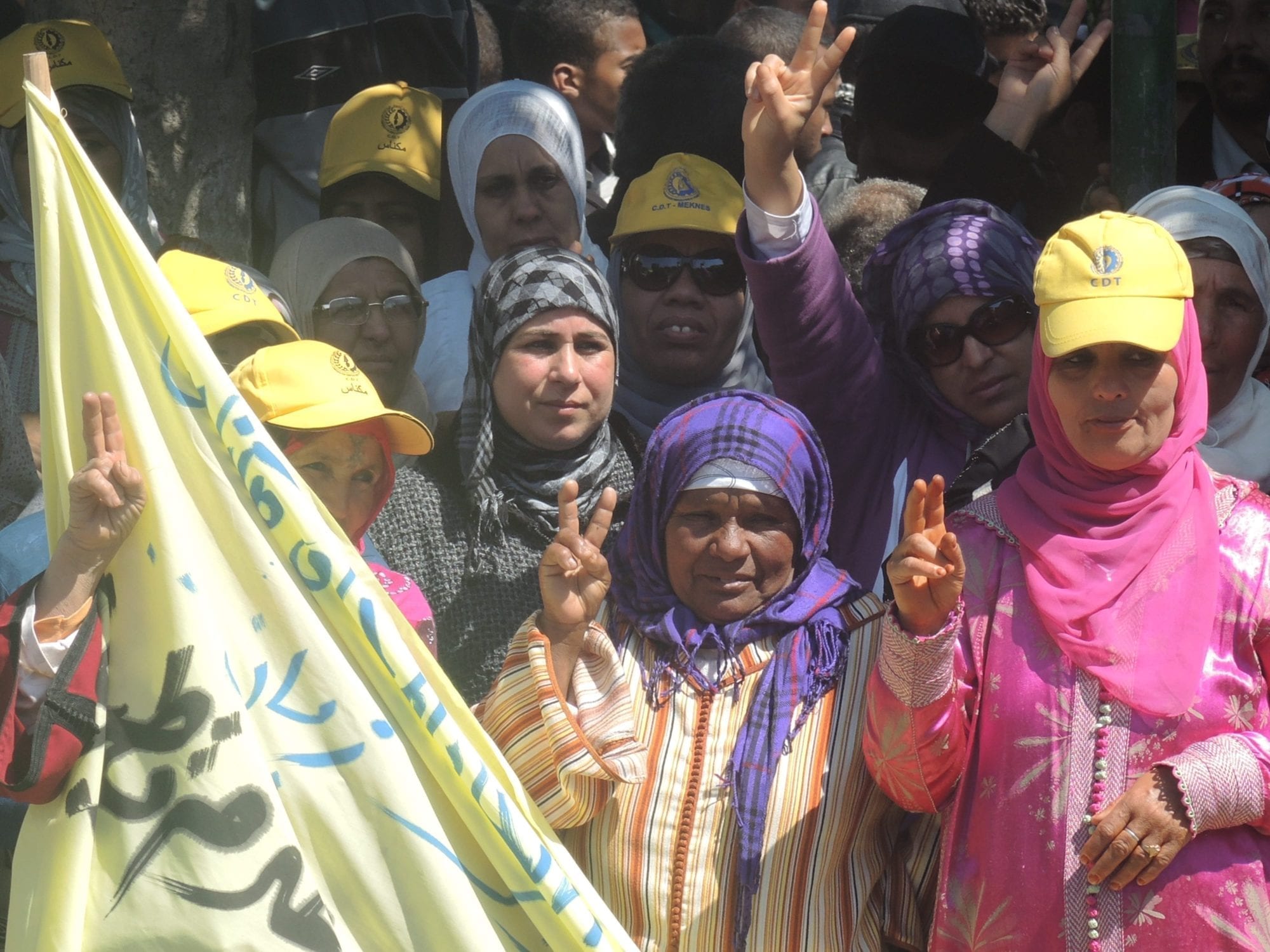
Jan 9, 2015
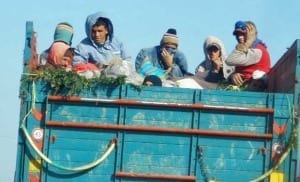
Agricultural workers in Meknes, Morocco, now have a first-ever collective bargaining agreement. Credit: Hind Cherrouk/Solidarity Center
The Confédération Démocratique du Travail (Democratic Labor Confederation, CDT) and the agro-industry employer, Les Domaines Brahim Zniber, signed a collective bargaining agreement today that covers nearly 1,000 agricultural workers on five large farms in Morocco’s fertile Meknes region. The pact follows a multi-year campaign by the CDT, with support from the Solidarity Center, to help workers in orchards, olive groves and vineyards improve their working conditions.
Under the agreement, agricultural workers receive bonuses if their work exceeds the norm. The agro-industry employer will provide safety equipment and social benefits, enabling workers to access worker compensation and other fundamental protections.
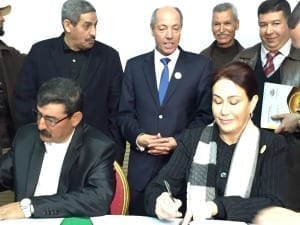
Moroccan Labor Minister Abdeslam Seddiki (standing, center), employer Rita Zniber and Bouchta Boukhalfa, the leader of CDT in Meknes (standing, left), take part in the signing ceremony. Credit: Colette Young/Solidarity Center
Crucially, this agreement– formalized during a ceremony with 400 workers, employers, labor leaders and government officials taking part–will guarantee their right to freedom of association and guarantees the rights of parties and social peace. In addition, this agreement will benefit all agricultural workers, especially women workers, who are active in this sector and represents an important percentage of the workforce. Les Domaines Brahim Zniber and the CDT are building bridges to extend similar agreements to other regions in Morocco.
“This agreement will ensure stability in employment,”says Abdelali Bouhiyadi, a union representative. “Even seasonal workers will keep their jobs and stay on the farms. Seasonal workers will be integrated gradually and the agreement will ensure social peace because a committee on conflict and negotiation will be established.”
Agriculture is a cornerstone of Morocco’s economy, with high-quality agricultural products, such as wine and olive oil, exported to Europe. Some 43 percent of workers in Morocco are employed in the country’s agriculture sector, and 40 percent are women.
“This agreement will allow us to have the opportunity to be trained in our jobs,” says Hayat El Khomssi, an agricultural worker.
The agreement is an important contribution to sustainable development and economic stability in Morocco, and will serve as a model for others to follow in Morocco and throughout the region. By taking this pioneering step and signing this agreement with the CDT, Les Domaines Brahim Zniber says it offers an example to other corporations that achieving world-quality products requires world-quality workers, and investing in workers is the most important investment corporations can make.
CDT leaders say this victory is an important step toward achieving the union’s vision of a sector-wide collective bargaining agreement for agricultural workers, one with the potential of improving the working conditions of all agricultural workers in Morocco.
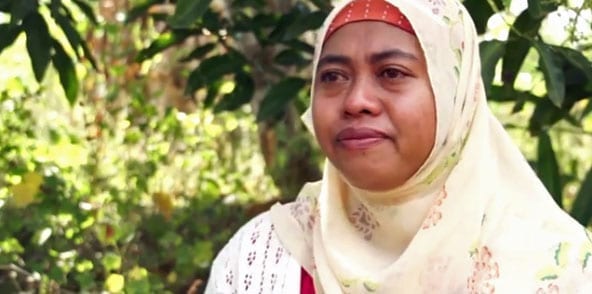
Jan 7, 2015
Sumbawa, a rural region in eastern Indonesia, offers residents little opportunity to make a living, and many migrate to neighboring Malaysia and Singapore for work.
“If we don’t go, we don’t have a job,” says Pak Syamsul, who worked in Malaysia for more than two decades before returning to Sumbawa. “There really isn’t much employment here. Nothing. That’s why people leave.”
Globally, there are an estimated 232 million migrants in the world, the overwhelming majority who migrate for work. More than 6 million Indonesians work abroad, and in 2013, their remittances to their families brought $7.4 billion into the Indonesian economy.
Each of those migrant workers has a story, and a new film by JustJobs takes a close-up look at those who, like Syamsul, travel far to support their families. “Pulang Pergi” (“Going Home to Leave Again”), based on research supported by the Solidarity Center, illustrates the cost and opportunities for migrant workers and their communities.
Faisa Trisnawati, 27, is among those who migrated for a job. She worked two years in Jordan and six years in Saudi Arabia, financially unable to pursue her dream of higher education.
“I think a lot about the future, about my children, because I myself couldn’t get an education,” says Trisnawati, as her 4-year-old daughter, Nabila, played nearby. “My aspirations were never realized. I want my children to be able to accomplish anything. Not like me, becoming a migrant worker abroad …”
Working as a farmer in Sumbawa is impossible, she says, because the cost of renting land and buying supplies would exceed income. Rich with agricultural potential, Sumbawa highlights the complex and often conflicting pressures underlying global labor migration, a region that received $1.4 million in remittances in 2013 and where its residents are forced to leave.
The Solidarity Center is supporting research on key migrant worker rights issues–examining how workers migrate and under what terms–both of which are critical questions for global economic and social development. As a worker rights organization, we seek to advance labor migration that promotes shared prosperity by lifting up and empowering workers in both origin and destination countries.
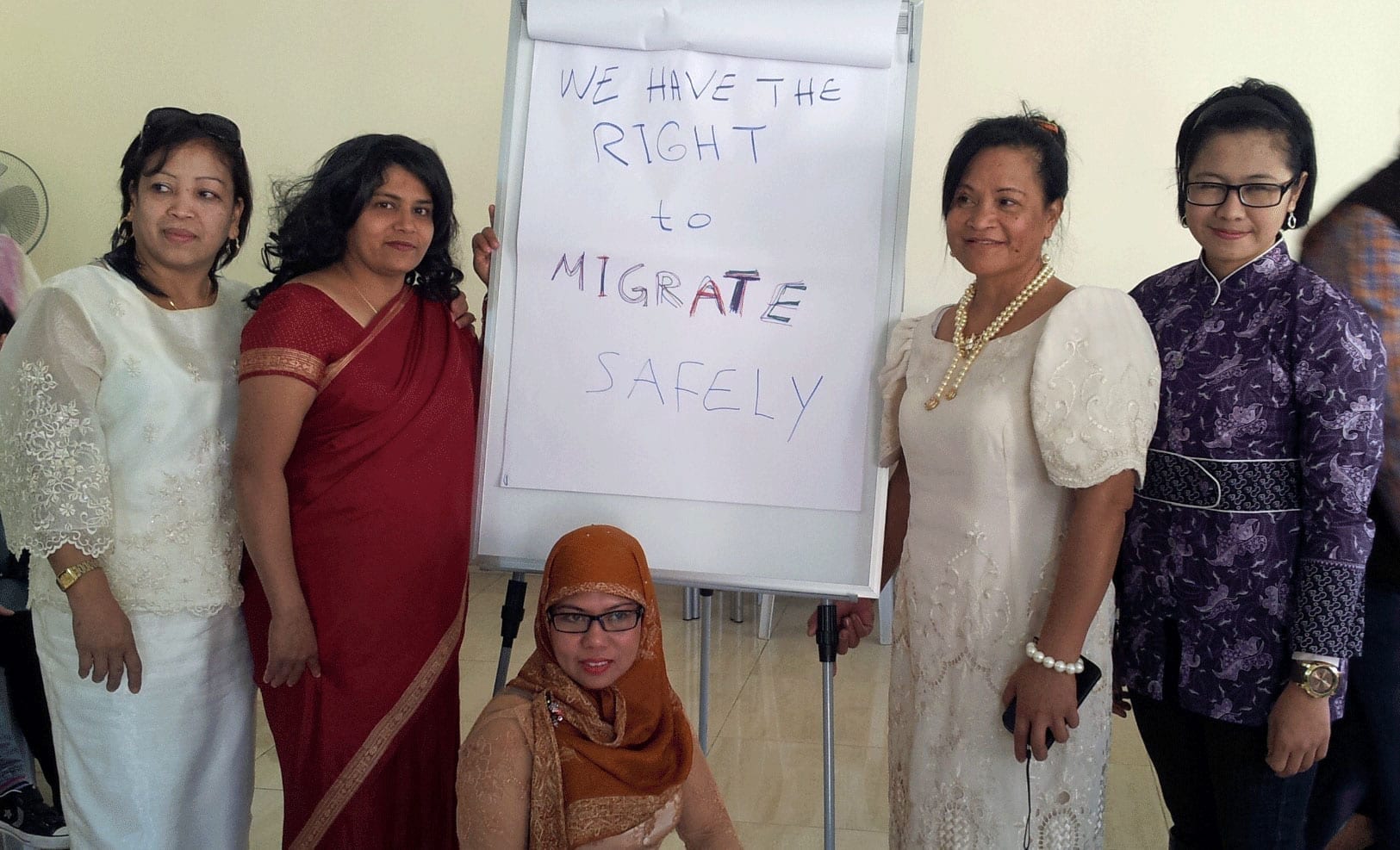
Dec 18, 2014
On December 18, we join workers around the world to celebrate International Migrants Day. It is a day to honor and support the women and men who often labor under limited legal protections and struggle daily to access their right to decent work.
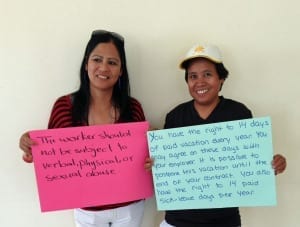
Filippino domestic workers in Jordan send a solidarity messsage to migrant workers around the world. Credit: Francesca Ricciardone
In Jordan, domestic workers from Sri Lanka, Bangladesh, the Philippines and Indonesia have joined together in the Migrant Domestic Worker Network to seek solutions to common challenges and educate their communities about their rights as migrant workers. The Solidarity Center convened the network to help connect domestic workers in Jordan with local legal service providers.
They gathered recently to send solidarity messages to migrant workers around the world.
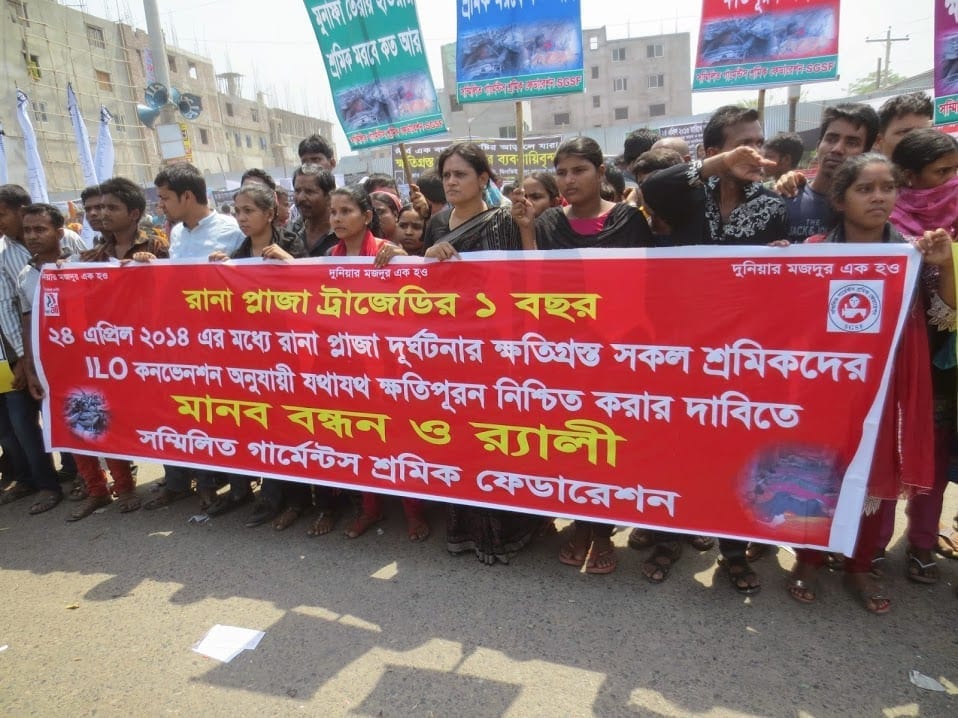
Dec 10, 2014
Each year on December 10, the global community marks International Human Rights Day, anchored in the founding document of the United Nations which asserts that each one of us, everywhere, at all times is entitled to the full range of human rights.
That founding document, the Universal Declaration of Human Rights, also lists “the right to form and to join trade unions” as a basic tenet of human freedom. For many workers around the world, the right to form unions is essential for ensuring the safe working conditions and living wages that are fundamental to human rights.
Two years ago, on November 24, the devastating fire at the Tazreen Fashion Ltd. garment factory in Dhaka, Bangladesh, killed 118 workers, the majority of them young women. Commentators at the time compared the disaster to the 1911 Triangle Shirtwaist Fire in New York, noting that moment in American labor history when young women garment workers began organizing their first unions.
The same phenomenon is taking root in Bangladesh, and for the same reasons. The momentum for union formation was accelerated by the April 2013 Rana Plaza building collapse in Bangladesh, which killed more than 1,100 workers. Following these twin tragedies, workers, primarily women, formed more than 200 new garment unions. Their rapid formation has been driven by the determination of women workers who have experienced how the past 30 years of job creation has not led to their economic or social advancement. They seized the moment to collectively join together to demand that jobs offer more than a meager paycheck.
It has been a nostrum of development economics for the past 20-plus years that merely creating garment-sector jobs was the key to women’s liberation and empowerment. True, approximately 80 percent of workers employed in the Bangladesh’s garment sector are women. True, millions of women now have an independent means of earning an income, which is important to raising women’s status within their family and community.
However, few adherents to this economic analysis have examined whether creating low-wage jobs has truly led to women’s empowerment in a way that is personal, cultural, sustaining or lasting. Rather, many economists and political scientists view Bangladesh and the global garment supply chain through a purely free-market perspective. Through this lens, any wages at all enable women to improve their status. Yet it is much more difficult to acknowledge that the real issue is the global supply chain within which women need to exert their power and genuinely take control of their own destinies inside and outside the home.
Statistical evidence suggests that women toiling at the bottom of the global garment supply chain in Bangladesh do, in fact, experience some social changes in contrast to women working in a subsistence agrarian economy. Research shows that a 10-hour-a-day, six-days-a-week job in the Bangladesh garment industry may improve women workers’ chances to send their children to school and keep them in there longer. However, these arguments are oversold. Women garment workers may or may not control their wages, depending upon gender-based power relations inside their homes. Often, they do not favor women.
Over the past 17 years that I have been involved with the Bangladesh labor movement, I have repeatedly seen how an income does not guarantee independence for a woman garment worker. This anecdotal evidence is backed up by fact. Research suggests that girls age 17 and 18 years old who live near garment factories actually drop out of school at a higher rate than their rural counterparts who go to work in the industry. Further, a 2009 study by the Bangladesh government’s National Bureau of Economic Research documents that non-garment workers’ mothers had a higher level of education than those of garment workers. And farm labor actually pays more than a job at a garment factory in the high-cost, high-inflation environments of Dhaka or Chittagong, according to a recent article in Dhaka’s Financial Express.
So if the one-dimensional argument that earning a wage results in women’s empowerment is fiction, what is the manifestation of real progress for women?
For the answer, I would point to prominent labor activists who have risen from the factory floors and now are organizing among their peers.
Kalpona Akter, Nazma Akter (no relation) and Nomita Nath, for example, all worked as child laborers in garment factories. They have emerged as real leaders, not because they made poverty wages as teens but because they dedicated their lives to uplifting the status of women workers in their society. They have found their power in fighting for jobs that do not starve, maim or kill women. And they know that vulnerable workers find empowerment when they have a union to represent them.
Workers struggle every day on Bangladesh’s factory floors. Women report that physical and verbal abuse are a matter of course. They are threatened when they do not make a quota or when they get pregnant. Or worse. Mira Boashak, president of a local union in Dhaka, was severely beaten in August by several men who had staked out her garment factory.
Despite these challenges, a young organizer told me earlier this year in Dhaka that prior to recent tragedies, her efforts to organize women into unions made her community think she was a troublemaker. Now, she said, she is seen as a champion of women’s rights and looked up to as a leader.
Real women’s empowerment—realized through asserting fundamental human rights.
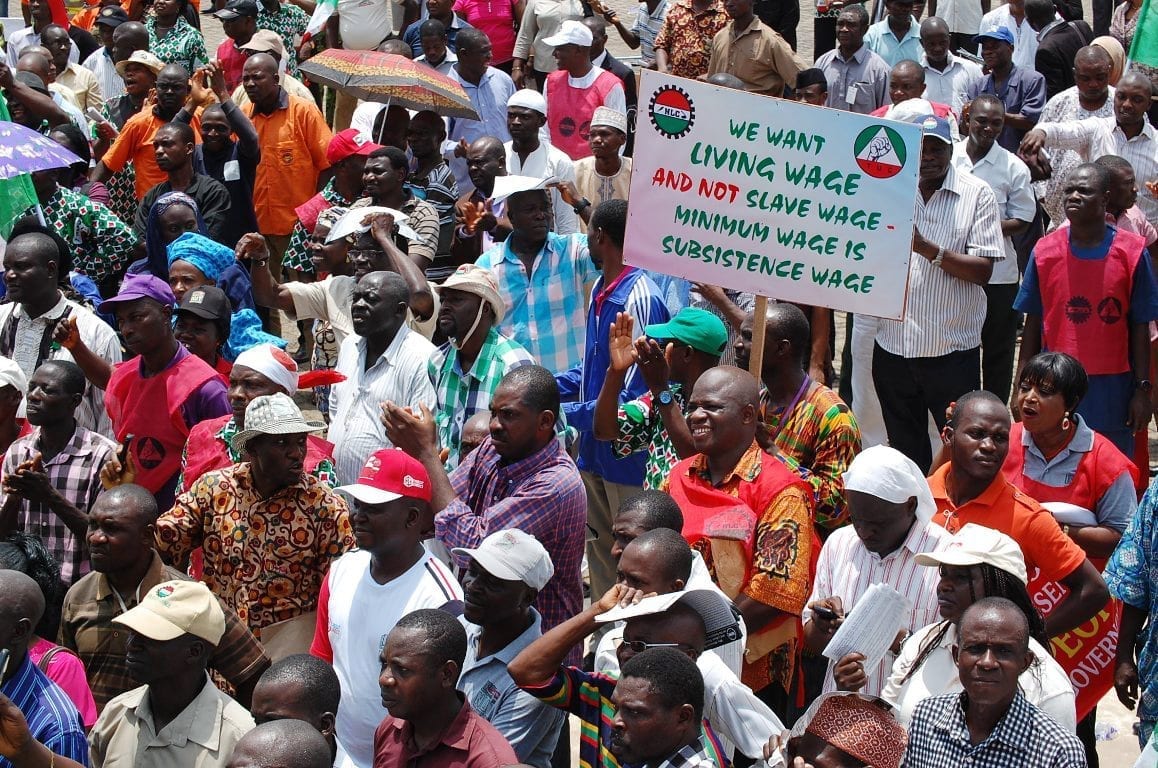
Dec 5, 2014
Inequality around the world has its roots in the labor market, according to this year’s International Labor Organization’s (ILO) “Global Wage Report.” ILO research shows that increased worker productivity–particularly in developed economies, where inequality saw its widest increase—has had little effect on boosting wages. However, some emerging and developing economies, especially those focused on poverty reduction, did see inequality decline through a greater focus on more equitable wage distribution and increased paid (as opposed to self-) employment.
The ILO found that minimum wages contribute effectively to reducing wage inequality—and collective bargaining is “a key instrument for addressing inequality in general and wage inequality in particular.”
Some of the blame for flat wage growth can be laid on the 2008 financial crash, which pushed workers out of jobs and lowered growth rates in many economies. The long-term forces of globalization, technology and the decline of unions also have contributed to the problem.
“Average monthly real wages grew globally by 2 percent in 2013, down from 2.2 percent in 2012,” according to the report. Developing and emerging economies drove this growth: Asia saw a 6 percent increase, Eastern Europe and Central Asia nearly 6 percent and the Middle East saw real wages rise by almost 4 percent. Wages in Latin America and the Caribbean rose by less than 1 percent. Average wages in developed countries grew just 0.4 percent since 2009, despite a 5.3 percent increase in worker productivity.
Inequality fell most in Argentina and Brazil. Workers’ real wages in industrialized countries like Japan, Spain and the United Kingdom are less than they were in 2007.
In almost all countries surveyed, wage gaps remain between women and men, between national and migrant workers and between workers in the formal and informal economy.
According to the ILO, the gender “wage penalty” occurs despite education, experience and productivity, and often as a result of discrimination. Indeed, women’s average wages are between 4 percent and 36 percent less than men’s, and the gap widens for higher-earning women. Closing that gap will require policies to combat discrimination and gender-based stereotypes, and improve maternal, paternal and parental leave, says the report.
The ILO was created in 1919, as part of the Treaty of Versailles that ended World War I, to reflect the belief that universal and lasting peace can be accomplished only if it is based on social justice.
Read a summary of the full Global Wage Report.
Check out the Global Wage Report in Short (video).








